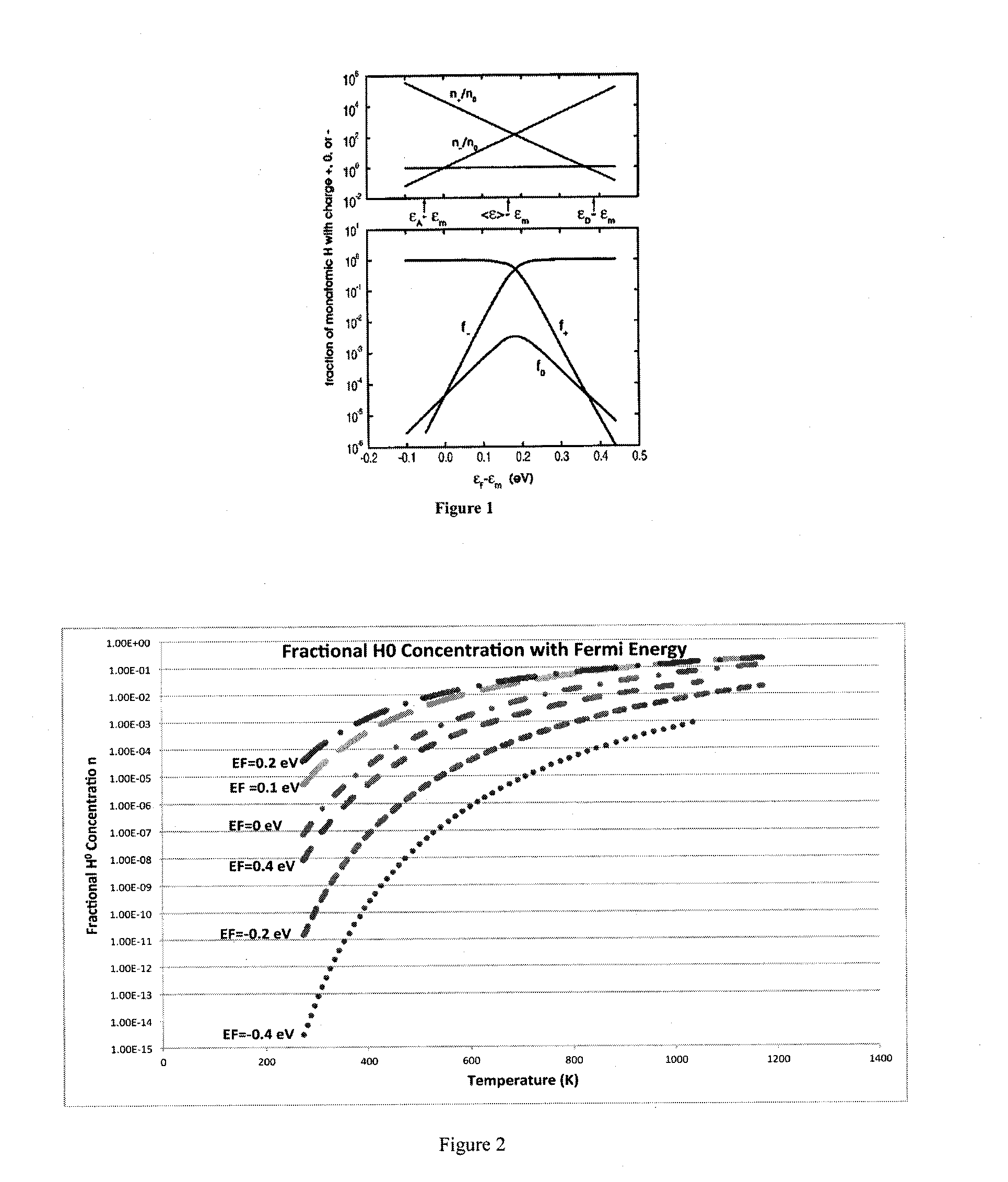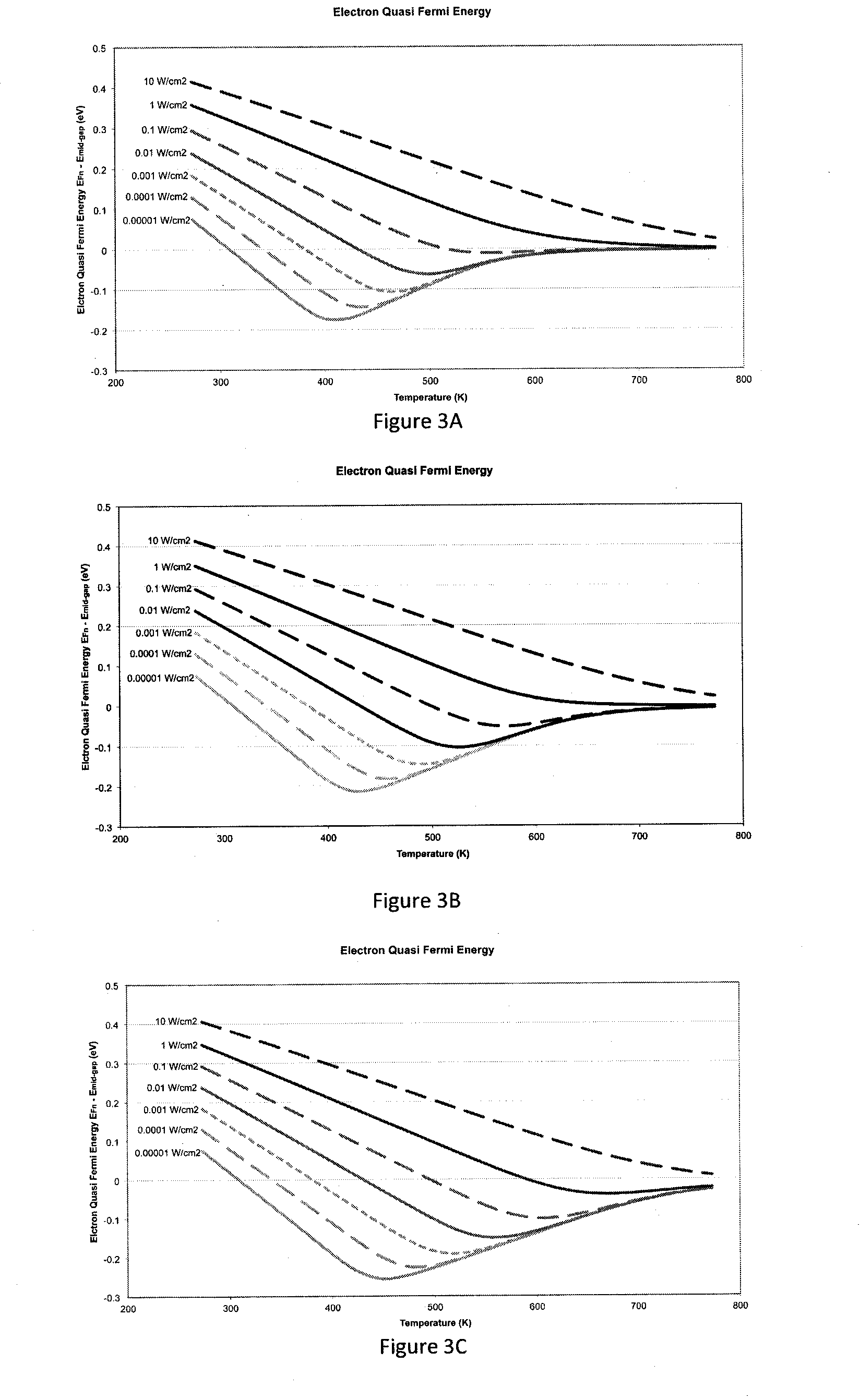Advanced hydrogenation of silicon solar cells
- Summary
- Abstract
- Description
- Claims
- Application Information
AI Technical Summary
Benefits of technology
Problems solved by technology
Method used
Image
Examples
application examples
[0129]FIGS. 8, 9&10 graphically illustrate respectively fractional H0 concentration as a function of temperature and illumination for bulk p-type doping of 1.5×1016 with hydrogenation paths for material with a minority carrier lifetime of 100 microseconds; fractional H0 concentration and Electron Quasi Fermi Energy with low temperature hydrogenation paths for 1×1016 bulk doping with a minority carrier lifetime of 100 microseconds; and Fermi energies in n-type silicon (no illumination) as a function of doping concentration and temperature;
Post Anneal Cooling
[0130]At present hydrogen passivation is predominantly at 400° C. or carried out at relatively high temperatures (700° C. to 900° C.) when carried out in conjunction with metal firing processes. At these latter high temperatures, as long as the wafer is only lightly doped, the Fermi energy is nearly mid-bandgap for bulk material and the emitter Fermi energy is approaching 0.2 eV above midgap, so hydrogen may exist as H0 and hence ...
example 1
Standard High Temperature Hydrogenation Anneal with Constant Illumination During Cool Down
[0133]This method would consist of a high temperature anneal (˜700° C.) followed by a cool down with a constant illumination level sufficient to maintain the electron quasi Fermi energy above mid-gap at all times until the wafer has cooled enough for the next process. This may be carried out with any cooling rate, and one possible implementation would comprise incorporation of lights into the cooling region of an inline belt furnace.
example 2
Standard High Temperature Hydrogenation with Illumination Controlled Over Process
[0134]As above, the wafers would first be hydrogenated at high temperatures for a brief period with as much illumination as possible (up to a limit of several hundred suns). As the wafers cool the light intensity will also decrease such that the electron quasi-fermi energy remains in the ideal region for H0 generation (0.1-0.3 eV above mid bandgap). This may be achieved for example using a belt furnace where the light intensity is set to become weaker as the wafers progress through the cooling zone.
PUM
 Login to View More
Login to View More Abstract
Description
Claims
Application Information
 Login to View More
Login to View More - R&D
- Intellectual Property
- Life Sciences
- Materials
- Tech Scout
- Unparalleled Data Quality
- Higher Quality Content
- 60% Fewer Hallucinations
Browse by: Latest US Patents, China's latest patents, Technical Efficacy Thesaurus, Application Domain, Technology Topic, Popular Technical Reports.
© 2025 PatSnap. All rights reserved.Legal|Privacy policy|Modern Slavery Act Transparency Statement|Sitemap|About US| Contact US: help@patsnap.com



